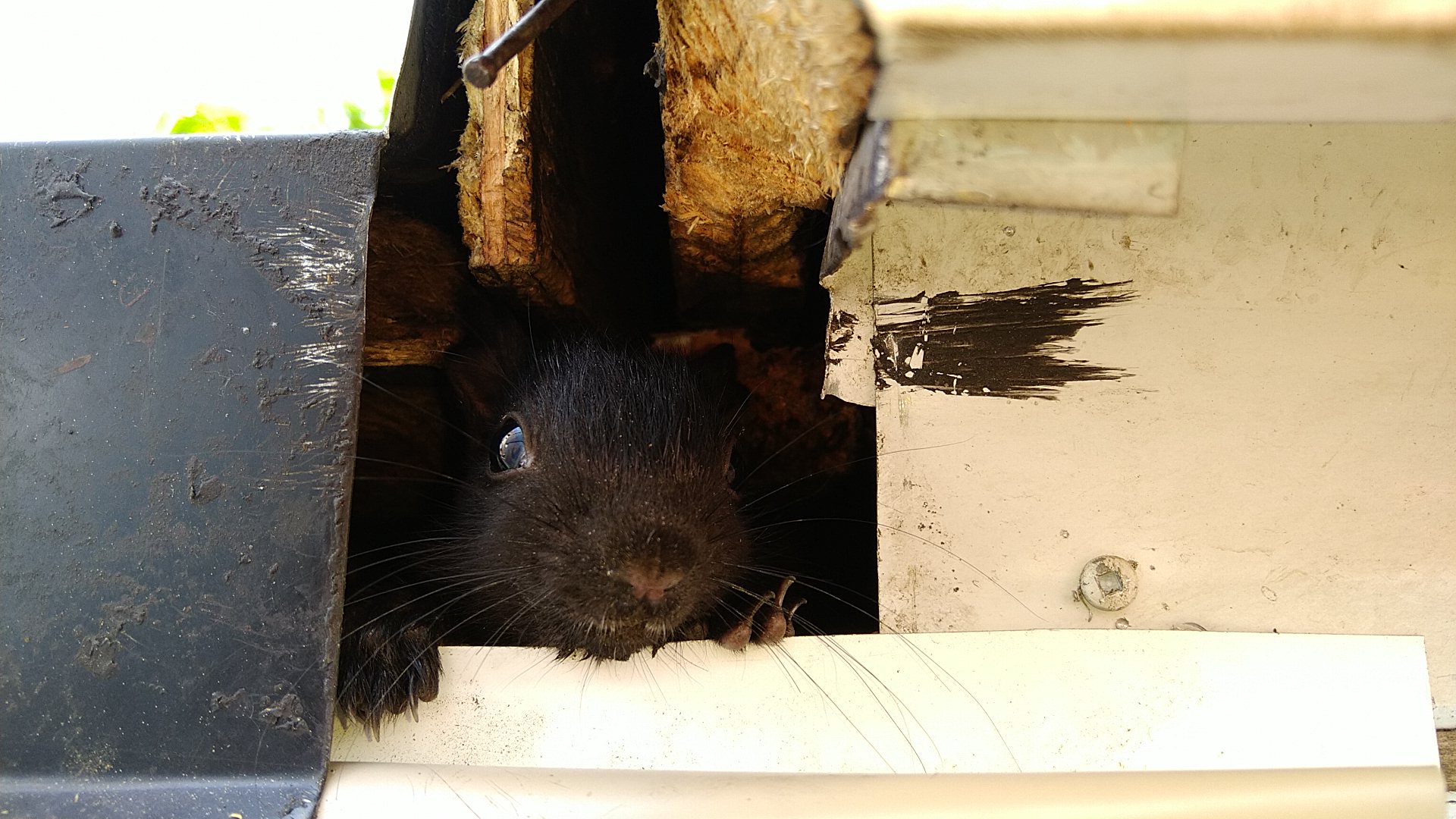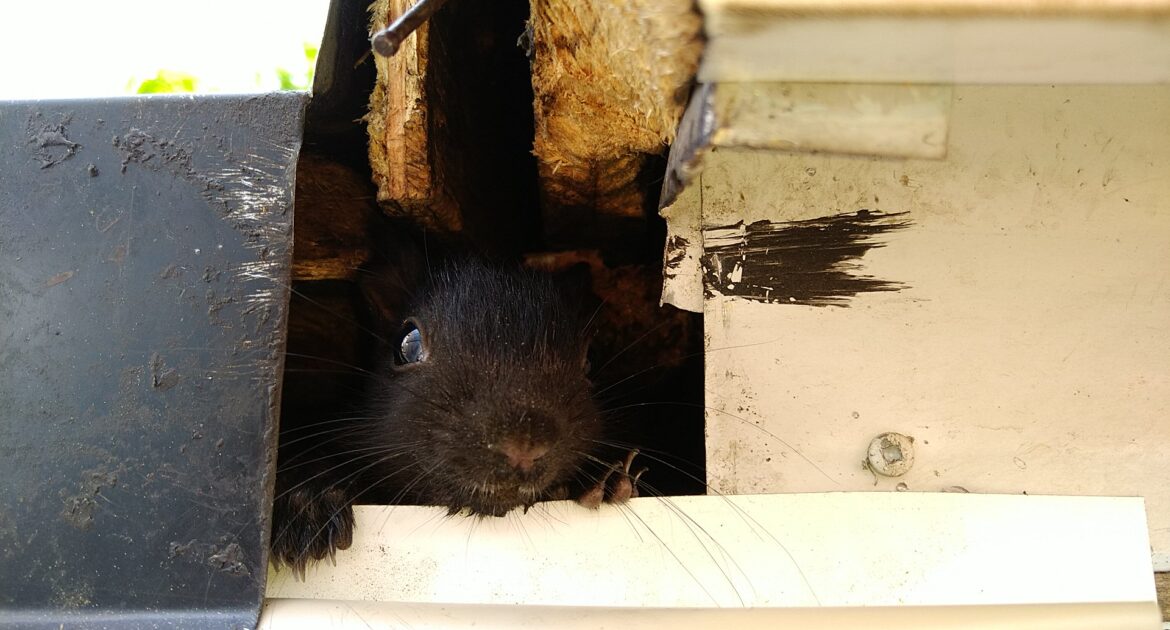Squirrels are a common sight in Ajax, and while their playful antics can be entertaining to watch, they can also cause frustration for homeowners. As anyone who has dealt with a squirrel invasion can attest, these furry animals can be quite a nuisance, wreaking havoc on property and causing damage. But have you ever wondered, “How do squirrels communicate with each other?”
Squirrel vocalizations can be quite complex and vary in meaning, ranging from warning calls to courtship chirps. Learning about these different vocalizations can help homeowners better understand what’s going on in their backyard and ultimately aid in squirrel removal in Ajax. In this blog, we’ll explore the different ways squirrels communicate, and how understanding their language can be helpful for homeowners looking to peacefully coexist with these animals.
Decoding the Chatter: Understanding Squirrel Vocalizations
The varieties of vocal signals these animals express are astonishing and scientists have only begun to scratch the surface of interpreting these sounds. Researchers report that our tree-dwelling friends use a combination of various sounds to communicate, such as chirping, whistling, hissing, and even a guttural purr. What is unique about their vocal signals is that they are context-specific, meaning they use different calls in different situations.
The Warning Call
One of the most common sounds you might hear from squirrels is the warning call. This sharp, high-pitched alarm is typically repeated in a rapid series, often when a potential predator such as a dog, cat, or human approaches their territory. The vocalization’s intensity usually corresponds with the threat’s proximity, increasing as the perceived threat approaches closer.
The Mating Call
Another common communication is the mating call. During the mating season, males and females employ a variety of calls to attract and communicate with potential mates. Females, in particular, use a long, sustained, high-pitched cry to indicate their availability and entice potential partners.
The Infant’s Call
Pups too, possess their unique sounds—infants emit a special call when they’re in distress, this cry is usually a steady, high-pitched whine. In reaction to this call, adult members will typically respond by rushing to the pup’s aid, proving these vocalizations play a vital role even in their early life stages.
Role of Body Language in Squirrel Communication
In addition to their varied vocalizations, our furry friends also rely heavily on non-verbal cues to communicate. One of the most noted forms of this silent but potent interaction is body language.
Alert Posture: When an individual is on high alert, their body reflects this heightened state. The body becomes rigid, and the tail is held up straight. Often this posture is accompanied by a warning call to alert others of potential danger.
Tail Flicking: Often seen before they make a daring leap from one tree to another, tail flicking is a common and intriguing behaviour of these agile woodland animals. Though the purpose of this behaviour is not entirely understood, some theorize it could be a form of communication among them.
Chasing: Particularly noticeable during the mating season, chasing is another common behaviour. Males often chase females as part of the courtship ritual. It’s also frequent among juveniles as a playful exercise that helps them hone their acrobatic skills.
The Power of Facial Expression
While subtle and often missed by an untrained eye, these animals do utilize facial expressions as a part of their communication toolkit. For instance, bared teeth can signal aggression, while wide-open eyes can denote alarm or surprise.
Each squirrel’s bark, chirp, tail flick, or even facial expression is part of a complex communication system that serves various purposes, from signalling danger to professing desire or playfulness. By better understanding these behaviours, we can gain a deeper appreciation for these fascinating backyard visitors.
The Role of Scent in Forest Dwellers’ Interaction
Aside from auditory and visual cues, another paramount facet of communication among this woodland animal is scent. It’s a means of conveying crucial information to others in their community using their acute sense of smell.
Each individual has a unique scent fingerprint, which is produced by their skin glands. This distinguishes them from one another and helps in identifying those within their community and those who are outsiders.
Scent Marking
A prevalent practice among these agile climbers is scent marking. This involves depositing their personal scent markers in key areas, such as on the trees they often climb, the territories they occupy, or the trails they frequently use.
Scent marking serves three pivotal purposes:
- Territorial Boundary Definition: By spreading their unique scent around their territory, individuals put others on alert that the area is occupied and defended. This helps ward off potential interlopers.
- Mate Attraction: During mating season, females will increase scent marking, effectively advertising their availability to prospective partners.
- Trail Navigation: By marking paths and trees with their scent, they create a sort of olfactory map, which can guide them back to their nests or lead them to food resources.
Role of Scent in Social Bonding
Interestingly, these vibrant animals also use scent as a means of social bonding. In group settings, they indulge in communal scent marking, where individuals collectively rub against and deposit their smell on each other. This shared scent helps strengthen community bonds and underlines group unity.
In the realm of these fascinating rodents, communication is not just about sounds or visual cues, but also about smells. Unravelling these complex communication methods, not only amplifies our understanding of these animals but also enables us to appreciate the depth and complexity of the natural world.
Call Skedaddle for Squirrel Removal in Ajax
As a specialized wildlife control organization, we are the trusted name in squirrel removal. With over three decades of experience, our team is well-versed in the customs and communication patterns of these animals. We understand the need to use humane techniques in our removal process, assuring each animal has a fair shot at life once relocated.
Our Removal Process
Understanding the communicative behaviours of these small forest dwellers is integral to our safe and humane removal process. This helps us to interpret their signals, predict their movements, and identify their habitats.
- Initial Inspection: Our experts will perform a thorough inspection of your property to identify the presence, entry points, and nesting areas of these rodents.
- Removal and Exclusion: Using one-way doors, we allow the animal to leave for food and it cannot re-enter. The nest is then safely extracted from your property.
- Preventing Re-entry: We will reinforce vulnerable areas around your property, ensuring these animals cannot re-enter your home in the future.
- Clear & Clean: After successful extraction, our team will sanitize your property, removing any urine, droppings or nesting materials that pose a potential health risk.
Why Choose Skedaddle?
Skedaddle’s mission is to provide effective, responsible solutions while promoting respect and mindfulness towards wildlife. Not only do we remove these visitors from your property, but we also contribute significantly to local wildlife conservation efforts.
Let’s remember that communication is key, not only for the furry foragers but for us too. If you need assistance, don’t hesitate to contact us right away. Our team is ready to serve, ensuring the safety and welfare of both you and the wild.
Have you caught sight of these agile acrobats on your property? If so, there’s no need for concern. Reach out to our professionals today! Our humane wildlife control solutions ensure a peaceful coexistence with your furry neighbours while safeguarding your space. Commit to the comfort and safety of your home—contact Skedaddle now for prompt and efficient wildlife control services.





